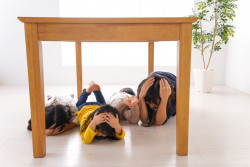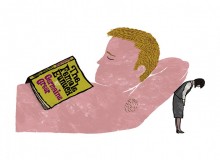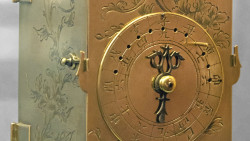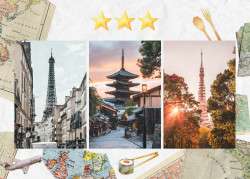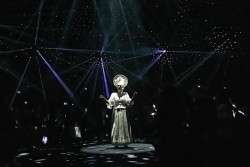
July 22, 2010
William Eggleston
A photo legend snaps Paris and Kyoto minus the clichés
By Metropolis
Originally published on metropolis.co.jp on July 2010

Paris, C-print, 28 x 35.6 cm, 2006-2008, Collection Cartier Foundation for Contemporary Art. Courtesy Cheim and Read, New York © 2009 Eggleston Artistic Trust, Memphis

Kyoto, LightJet print, 76 x 61 cm, 2001 Collection Cartier Foundation for Contemporary Art. © 2001 Eggleston Artistic Trust, Memphis

Paris, C-print, 28 x 35.6 cm, 2006-2008, private collection, Paris. Courtesy Cheim and Read, New York © 2009 Eggleston Artistic Trust, Memphis

Paris, C-print, 35.6 cm x 28 cm, 2006-2008. Courtesy Cheim and Read, New York © 2009 Eggleston Artistic Trust, Memphis

Kyoto, LightJet print, 101.5 x 76 cm, 2001, Collection Cartier Foundation for Contemporary Art. © 2001 Eggleston Artistic Trust, Memphis
Asked by the Paris-based Cartier Foundation for Contemporary Art to document the city famed for its art and architecture, the 71-year-old lensman resorted instead to close-ups of trash bags, anonymous bits of wall “decorated” with graffiti, and other ambiguous and banal fragments of the city.
The exhibition “William Eggleston: Paris-Kyoto” at the Hara Museum of Contemporary Art shows the same photographic approach applied to Kyoto, which Eggleston picked after the Cartier Foundation commissioned him to document a city of his choice.
Instead of obvious landmarks or pictures of white-faced geishas shuffling along in silk kimonos, we get a game center window, a woman on the subway seen through a piece of opaque glass, and a TV reflected in the photographer’s hotel room window.
Eggleston’s stubborn refusal to embrace more recognizable forms of beauty may seem perverse, while the apparent adulation in which he is held reminds us of Emperor’s New Clothes syndrome. Indeed, the apparent randomness of many of the shots might motivate you to think again and again, “I could do that!” But on further reflection, very few of us would take the sort of pictures that Eggleston does. Confronted with a bag of garbage in a city as photogenic as Paris, most people would simply turn around in search of more obvious beauty, with the result that we would end up taking more clichéd shots.
This is because photography, compared to other forms of art such as painting, lacks elements of touch and expressiveness, which can lead it all too easily to rely on hackneyed and trite visual ideas. This is doubly true for photographs taken in locales, like Paris and Kyoto, that seem to serve up their beauty on a plate.
To be distinctive in this context, a photographer needs to rely on more than equipment and technical skill. The key to standing out is evolving a unique aesthetic. Whether you think Eggleston’s photography is worthwhile or not, this is what he has done with these shots.
“Whatever my style is, the results will be pictures that have not been done before,” the photographer said in a recent interview. “I don’t do it on purpose, it just happens. My works just look like I did them.”
Except for the occasional bit of French or kanji that narrows things down, most of the pictures could be from almost anywhere in the world. They lack the obvious iconography that shouts “This is Paris” or “Here is Kyoto.” However, viewed as part of their group, they instead seem to subtly whisper the name of their city.
Eggleston is particularly renowned for his rich sense of color, and was instrumental in the ’70s in establishing color photography as a legitimate artistic medium. Several of the works in the show, all of which are untitled, show his lurid sense of color.
In addition to the 100 or so photographs at the Hara, there is also a free exhibition of Eggleston’s works at Scai the Bathhouse. Featuring around 25 photographs, “William Eggleston: 21st Century” presents an eclectic selection of his recent work.
Hara Museum of Contemporary Art
William Eggleston. Paris-Kyoto. Photography. Until Aug 22, ¥500 (elem, MS)/¥700 (HS, univ)/¥1,000 (adult). 4-7-25 Kita-Shinagawa, Shinagawa-ku. Open Tue-Sun 11am-5pm (Wed until 8pm), closed Mon. Nearest stn: Shinagawa. www.haramuseum.or.jp
Scai the Bathhouse
William Eggleston: 21st Century. Photography. Until Aug 4, free. 6-1-23 Yanaka, Taito-ku. Tel: 03-3821-1144. Open Tue-Sat noon-7pm, closed Sun-Mon. Nearest stn: Nippori. www.scaithebathhouse.com
